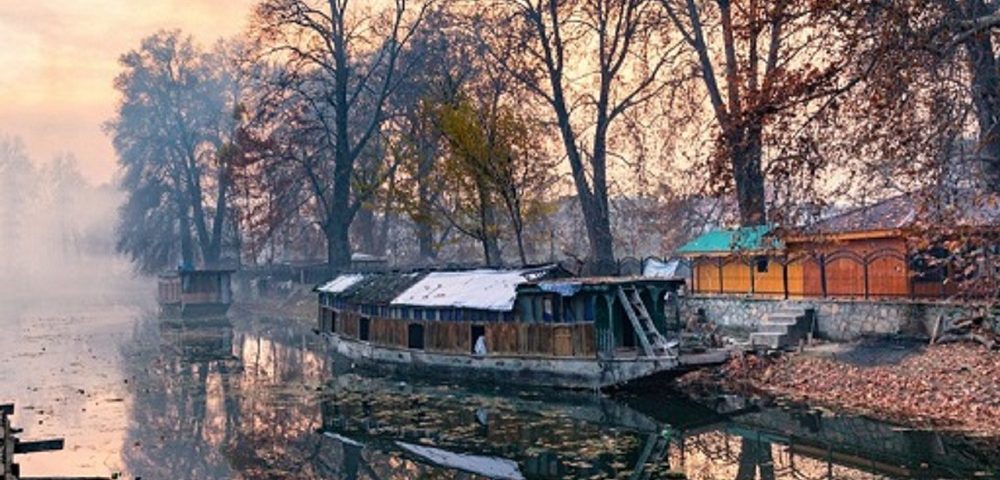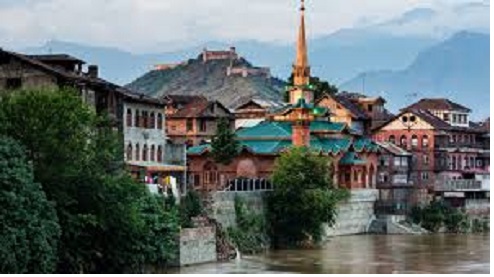
Srinagar, the beautiful city and summer capital of Jammu and Kashmir is situated in the core of the Kashmir valley at an elevation of 5200 feet above ocean level. Located in the middle of clean water lakes and elevated forested mountains, Srinagar has since quite a while ago had an extensive traveller economy. Spread on the two sides of the river Jhelum the city is renowned for its magnificence, beautiful garden, waterfronts and houseboats. Along its course through the city, the Jhelum River is traversed by a few wooden overpasses, and various neighbouring trenches and streams swarm with shikara, the gondolas of Kashmir.
Srinagar is known as the city of lakes and the Venice of the East, captivating travellers from hundreds of years with its delightful beautiful Himalayan background, sparkling lakes that are encircled by houseboats and Shikaras and the magnificence of Mughal architectonics. The city is very well known for classic Kashmiri handicraft works and dry fruits. The very inattentive order in the area of the houses and their tumbled down appearance add an exceptional outlandish appeal to the landscape. It has its own captivating way of life, telling a pictorial fantasy journey through the snow-topped mountains and Chinar trees while appreciating the brave joys of climbing, mountain biking, and boating.
Srinagar is famous for its numerous mosques and sanctuaries; the Hazratbal Mosque contains a hair that supposedly had a place with the Prophet Muhammad, and the Jāmiʿ Masjid, worked in the fifteenth century, is supposed to be the biggest mosque in Kashmir. Dal Lake, with its “gliding gardens,” is a notable fascination, similar to the close by Shalimar and Nishat gardens. Here are the best places in the Srinagar.
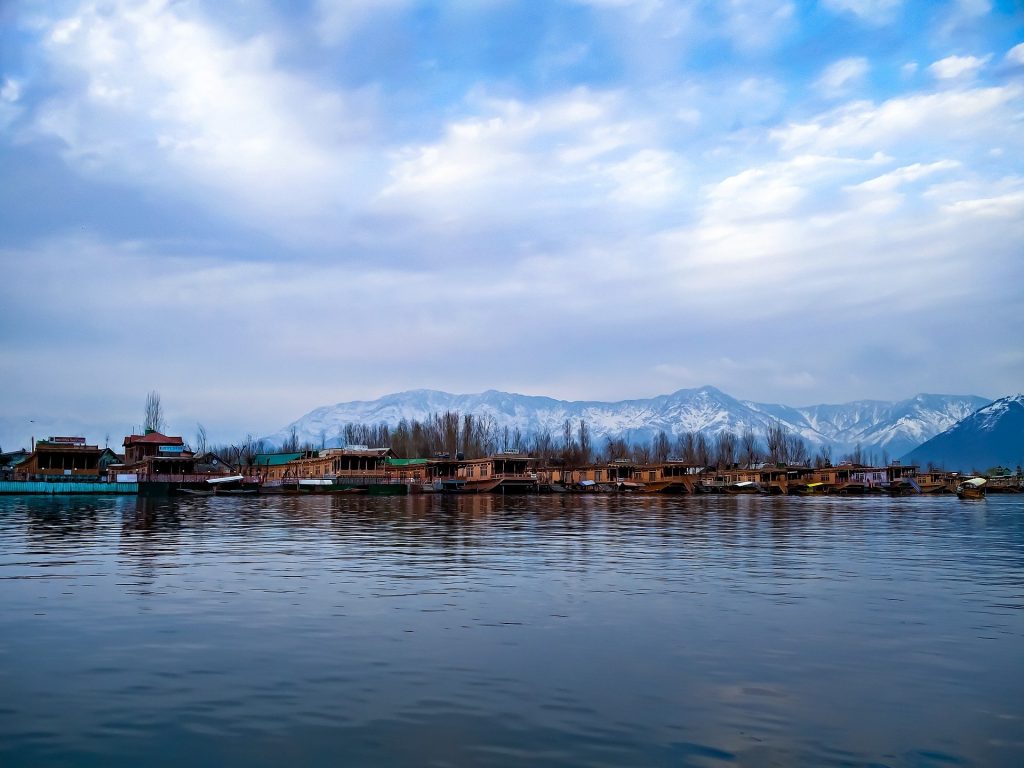
Dal Lake
The Dal lake is an integral part of tourism and recreation in Kashmir and is named the “Jewel in the crown of Kashmir” or “Srinagar’s Jewel”. Dal Lake is equivalent to a visit to Srinagar and is right around a visual meaning of the town. The lake is also an important source for commercial operations in fishing and water plant harvesting. It spread in more than 15 km, it is the second-biggest lake in Jammu and Kashmir. The mirror-like Dal Lake shows the snow-tidied peaks of the Pir Panjal mountains while the vibrant and colourful shikaras (gondolas) swim around. The houseboats and shikaras are the main attraction of Srinagar. The Dal Lake of Srinagar is also very famous for the floating market which is also called ‘Raad’ in there a local language where merchants have their own Shikaras and they attract customers by selling every attractive thing of Srinagar like there seasoned fruits vegetables appealing handicrafts, saffron, edibles and even ice creams etc.. Ice skating during winter on the iced Dal Lake is always in the bucket list if the travellers. (click-me for more details)
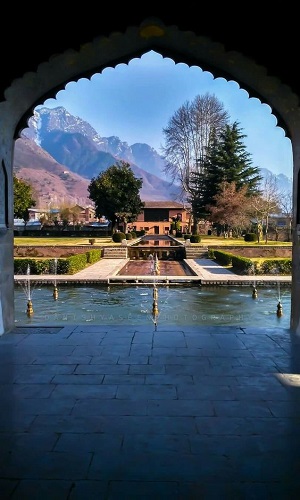
2-Shalimar bagh
Shalimar Bagh is one of the famous architecture of Mughal era ‘a very beautiful garden’ the biggest of the three Mughal gardens in Srinagar (the other two being Nishat Bagh and Chashme Shahi). This perfect fascination was underlying the year 1619 by the Mughal ruler Jahangir for his darling wife Nur Jahan. At present, Shalimar Bagh is a public park and it is known as the “crown of Srinagar”.
The chini khanas or curved specialities set behind cascades and the chinar trees are the features here. The term ‘Shalimar’ is a Sanskrit word signifying ‘Dwelling place of Love’ and it is also known from other names which are given by emperor Jahangir. Sprinkled liberally with all-around beautiful gardens and antique design, Shalimar Garden is a delicate mix of the characteristic charm and man-made structures.
Shalimar Bagh is a Mughal garden in Srinagar, connected through a channel toward the upper east of Dal Lake, on its correct bank situated on the edges of Srinagar city in Jammu and Kashmir, India. (click-me for more details)
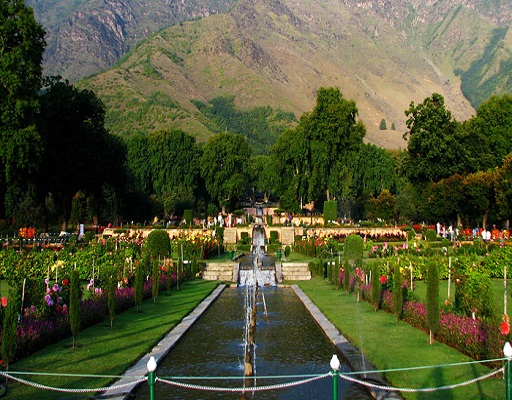
3- Nishat Garden
Nishat Bagh a Mughal garden is a terraced garden based on the east side of the Dal Lake, near Srinagar in the UT of Jammu and Kashmir, India. It is the second biggest Mughal garden in the Kashmir Valley. The biggest in size is the Shalimar Bagh, which is likewise situated on the bank of the Dal Lake. ‘Nishat Bagh’ is Urdu, which signifies “Nursery of Joy,” “Nursery of Gladness” and “Nursery of Delight.
The Nishat garden is situated on the bank of the Dal Lake, with the Zabarwan Mountains on its backside, In Urdu mean Nishat Bagh is a nursery of joy that reflects a perspective on the lake underneath the snow-covered Pir Panjal mountain range that remains far away toward the west of the valley. The Bagh was planned and underlying 1633 by Asif Khan, senior sibling of Nur Jehan.
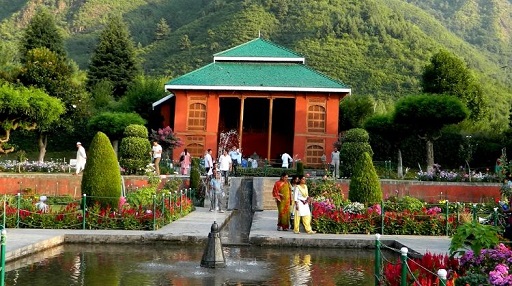
4- Chasme Shahi
The Chashme Shahi means the Royal Spring, one of the Mughal Garden which actually lessen the beauty of Dal Lake and placed in the Zabarwan mountain range close to the Raj Bhawan in Srinagar. The nursery was worked around a spring, in 1632 AD, by Ali Mardan Khan who was a legislative head of Emperor Shah Jahan. Shah Jahan got the nursery worked as a present for his child Dara Shikoh. Around 2 kilometres from the nursery is the Pari Mahal where Dara Shikoh used to learn crystal gazing. It was here that he was murdered by his sibling Aurangzeb.
The nursery with its arranged patios, etched wellsprings, common springs, bright blossoms and perspectives on the encompassing mountains are a picture taker’s pleasure! Other than getting a charge out of the normal excellence of the nursery, there isn’t a lot to do at the Chashme Shahi. In any case, on the off chance that you appreciate relaxed strolls, you will adore the peacefulness of the nursery. The water from the regular spring at Chashme Shahi is accepted to have restorative properties. Various travellers can be seen drinking this water accepting that it can forestall and fix various illnesses.
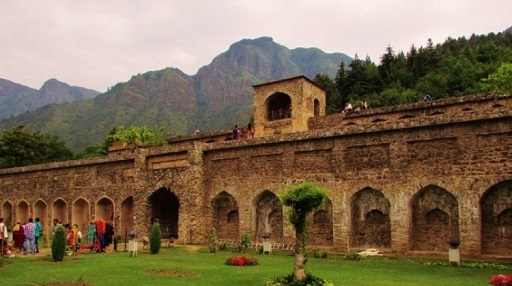
5- Pari Mahal
Thi mesmerizing place called the ‘Dwelling place of Fairies’, Pari Mahal is a six terraced garden that sits on top of the Zabarwan mountain reach and neglects the Dal Lake. The spot watches straight out of a fantasy and has valid justifications to legitimize its title. The engineering portrays a case of Islamic design and support of craftsmanship during the rule of the then Mughal Emperor Shah Jahan. The Pari Mahal was worked by Mughal Prince Dara Shikoh during the 1600s. It filled in as a library and a residence for him. Dara Shikoh was said to have lived around there in the years 1640, 1645, and 1654. It was additionally utilized as an observatory, valuable for showing crystal gazing and cosmology.

